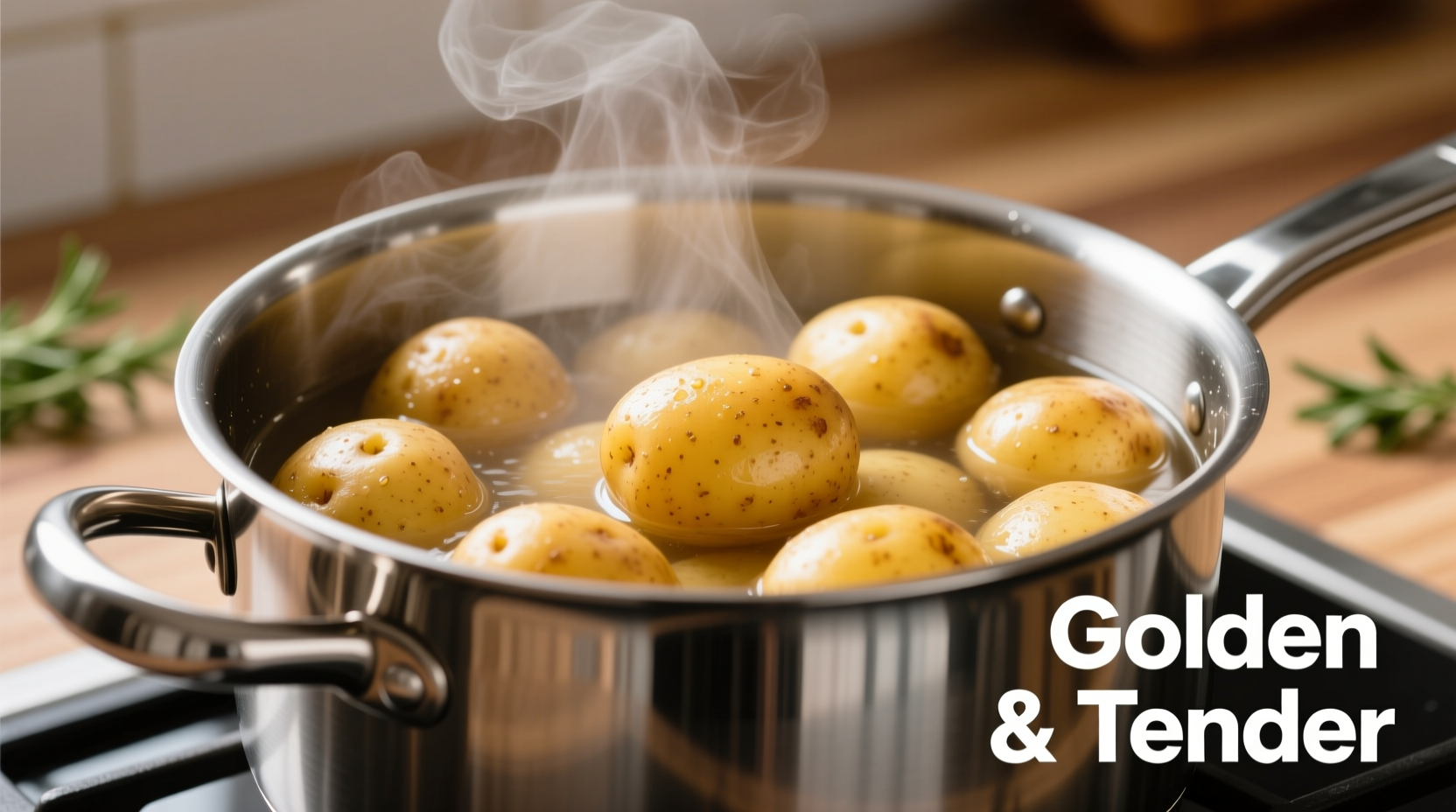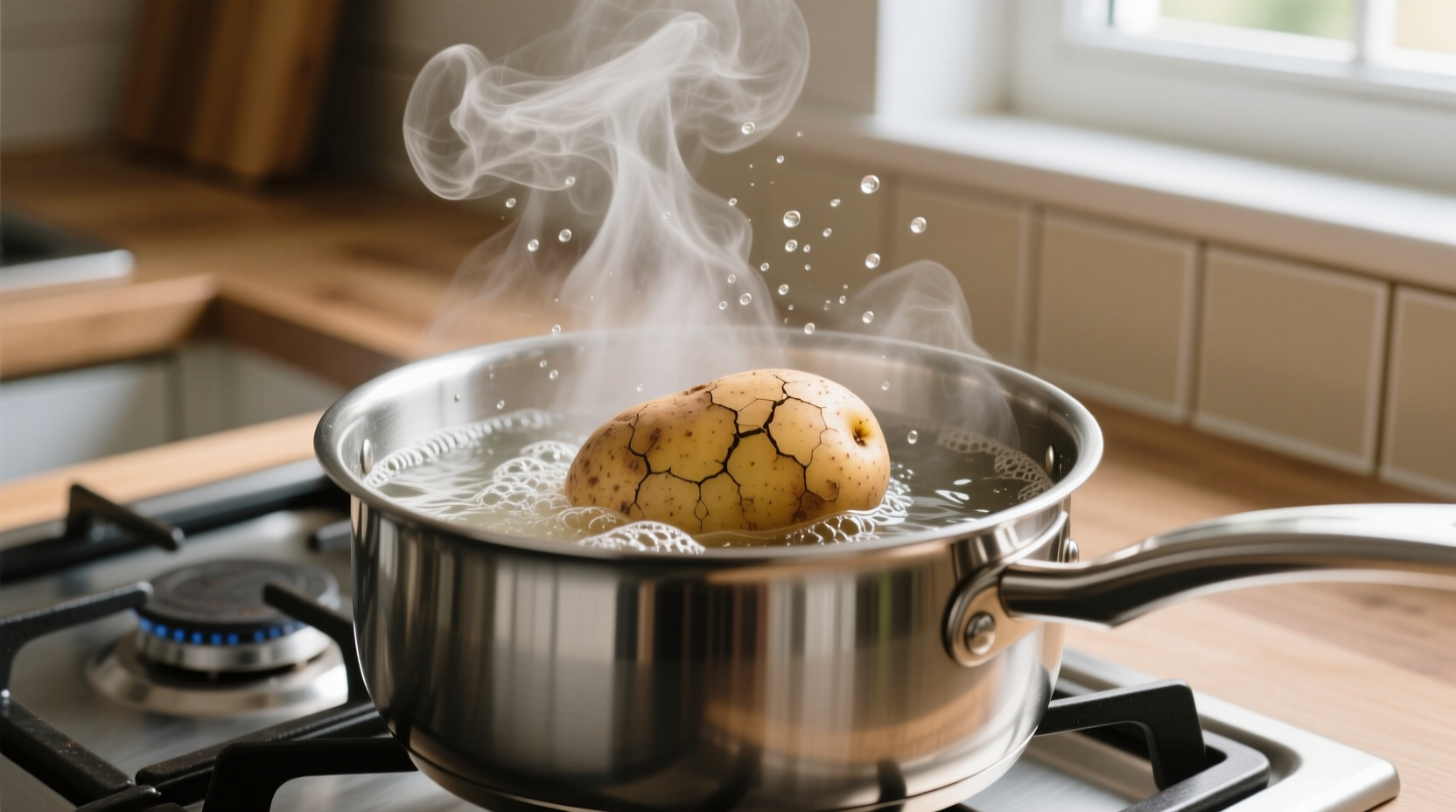The Foolproof Method for Boiling Potatoes Every Time
Nothing ruins a meal faster than mushy, unevenly cooked potatoes. Whether you're preparing mashed potatoes for Sunday dinner or cubed potatoes for a salad, mastering this fundamental cooking technique ensures consistent results. This guide reveals the precise steps professional chefs use to achieve perfectly tender potatoes with ideal texture every time you cook.
Why Your Potatoes Keep Failing (And How to Fix It)
Most home cooks make critical mistakes when boiling potatoes that lead to disappointing results. The three most common errors:
- Starting with hot water instead of cold
- Overcrowding the pot
- Boiling vigorously instead of simmering gently
These mistakes cause uneven cooking, cracked skins, and waterlogged interiors. The solution lies in understanding potato science and following precise technique.
Essential Equipment Checklist
You don't need specialty equipment, but these items make a significant difference:
- Heavy-bottomed pot (prevents scorching)
- Mesh strainer (for quick, complete draining)
- Timer (critical for perfect timing)
- Rounded knife (for even cutting)
Potato Selection Guide: Match Variety to Purpose
Not all potatoes behave the same when boiled. Choose based on your end use:
| Potato Type | Best For | Boiling Time | Water Ratio |
|---|---|---|---|
| Russet | Mashed potatoes | 20-25 minutes | 1:7 |
| Yukon Gold | Salads, roasting | 15-20 minutes | 1:6 |
| Red Potatoes | Salads, boiling with skin | 15-18 minutes | 1:5 |
| Fingerling | Whole boiling | 18-22 minutes | 1:6 |
This comparison comes from the USDA Food Safety and Inspection Service guidelines for vegetable preparation, which emphasize matching cooking methods to potato varieties for optimal texture and nutrient retention.
Step-by-Step Boiling Process
Preparation Phase
- Wash potatoes thoroughly under cold running water
- Peel if desired (skin-on retains more nutrients)
- Cut into uniform 1.5-inch pieces (critical for even cooking)
- Place in cold water immediately to prevent browning
Cooking Phase
- Add potatoes to cold water in heavy pot (never hot water)
- Use precise 1:6 potato-to-water ratio (1 pound potatoes to 6 cups water)
- Add 1 tablespoon salt per pound of potatoes
- Bring to gentle simmer (small bubbles breaking surface)
- Cook uncovered for 15-25 minutes (time varies by potato type)
Finishing Phase
- Test for doneness with fork at 15 minutes
- Drain immediately in mesh strainer
- Return to pot for 1 minute to evaporate excess moisture
- Proceed with recipe (mashing, roasting, etc.)

Science-Backed Timing Guidelines
Potato starch behavior determines perfect cooking time. According to research from the USDA National Institute of Food and Agriculture, potatoes reach ideal texture when internal temperature reaches 190-200°F (88-93°C). This occurs at different times based on:
- Potato density (russets take longer than waxy varieties)
- Cube size (1.5-inch cubes cook 30% faster than whole potatoes)
- Altitude (add 5% cooking time for every 1,000 feet above sea level)
Pro Tips for Flawless Results
- Add vinegar (1 teaspoon per quart) when boiling peeled potatoes to maintain shape
- Never salt water before potatoes are added (causes uneven absorption)
- Keep heat at gentle simmer—vigorous boiling breaks potatoes apart
- For salads, cool potatoes in ice water immediately after draining
- Always start timing when water reaches simmer, not when it boils
Troubleshooting Common Problems
Mushy potatoes: Overcooked or wrong variety (use waxy potatoes for salads)
Hard centers: Cut pieces too large or insufficient cooking time
Cracked skins: Started with hot water or boiled too vigorously
Bland flavor: Insufficient salt or wrong potato variety for purpose
Advanced Technique: Par-Cooking for Roasting
For perfectly crispy roasted potatoes, par-boil first:
- Boil cubed potatoes for 8 minutes
- Drain and shake in colander to roughen edges
- Spread on baking sheet with oil
- Roast at 425°F for 35-40 minutes
This technique, recommended by culinary institutes worldwide, creates maximum surface area for crispiness while maintaining tender interiors.
Frequently Asked Questions
How much salt should I use when boiling potatoes?
Use 1 tablespoon of salt per pound of potatoes. This ratio seasons the potatoes properly without making them overly salty. Add the salt to the water after adding the potatoes, not before, for even seasoning throughout.
Should I start potatoes in cold or hot water?
Always start potatoes in cold water. This allows for gradual, even heating which prevents the outside from overcooking while the center remains raw. Starting in hot water causes the exterior to cook too quickly while the interior stays hard.
How do I prevent potatoes from falling apart when boiling?
Choose waxy potato varieties like Yukon Gold or red potatoes, cut to uniform size, start in cold water, and maintain a gentle simmer rather than a rolling boil. Adding 1 teaspoon of vinegar per quart of water also helps maintain structure, especially for peeled potatoes.
Can I boil potatoes ahead of time for meal prep?
Yes, boiled potatoes can be stored in the refrigerator for 3-4 days. Cool them completely in a single layer, then store in an airtight container. For best results, don't add seasonings until reheating. When reheating, place in a covered dish with a splash of water and warm in a 350°F oven for 15-20 minutes.











 浙公网安备
33010002000092号
浙公网安备
33010002000092号 浙B2-20120091-4
浙B2-20120091-4